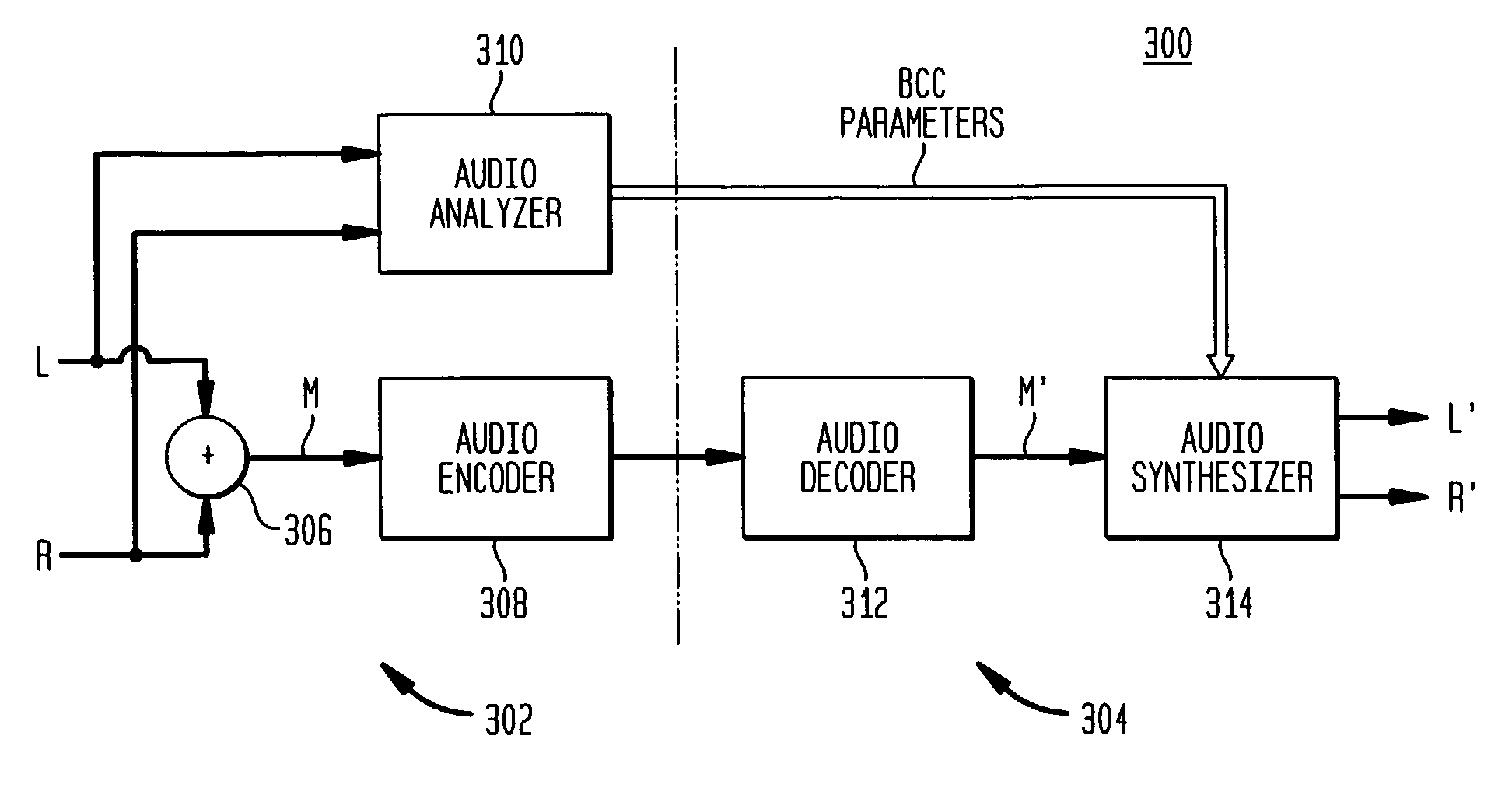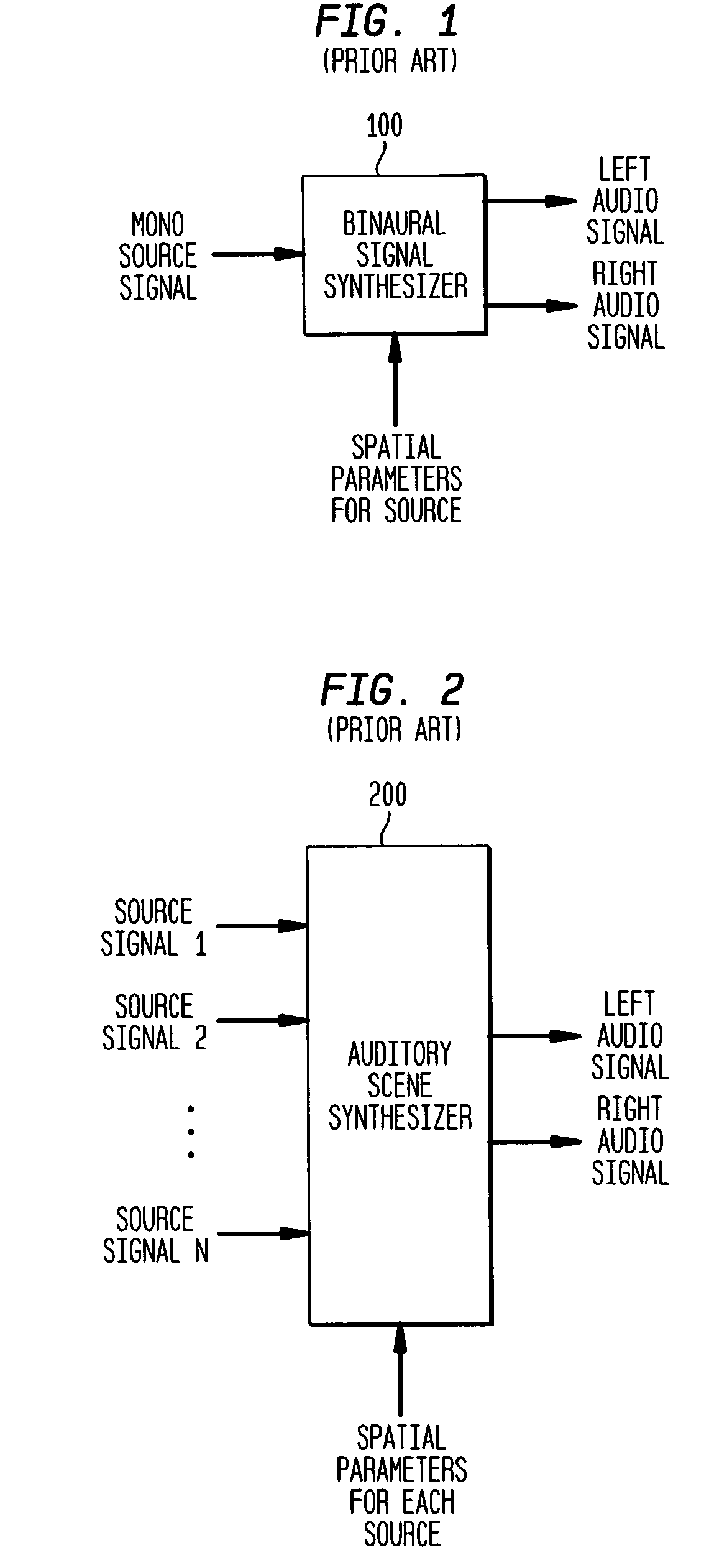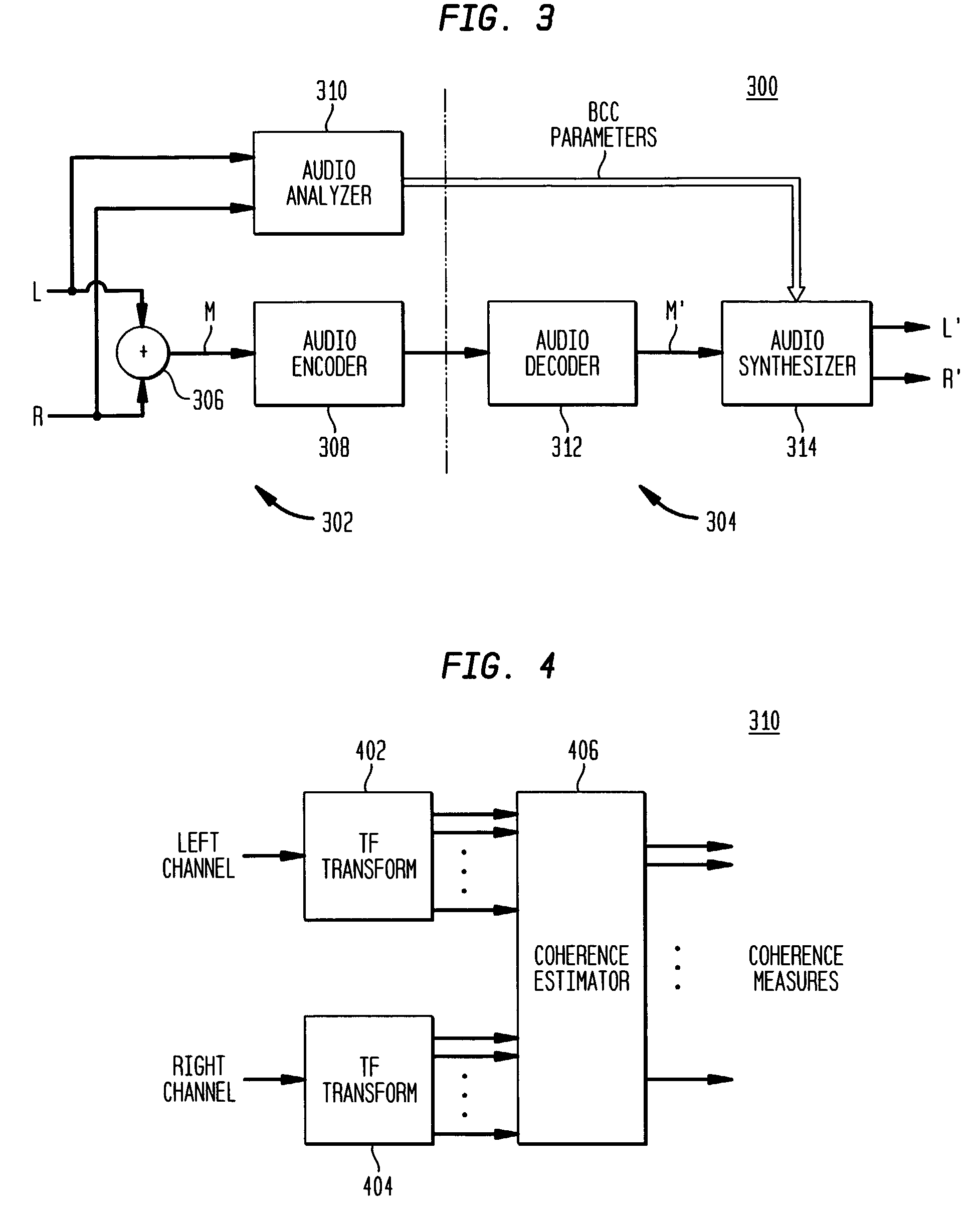Coherence-based audio coding and synthesis
a coherence-based, audio-based technology, applied in the field of coherence-based audio-coding and synthesis, to achieve the effect of reducing the transmission bandwidth requirements
- Summary
- Abstract
- Description
- Claims
- Application Information
AI Technical Summary
Benefits of technology
Problems solved by technology
Method used
Image
Examples
Embodiment Construction
[0031]FIG. 3 shows a block diagram of an audio processing system 300 comprising a transmitter 302 and a receiver 304, according to one embodiment of the present invention. Transmitter 302 converts the left and right channels (L, R) of an input binaural signal into an encoded mono audio signal and a stream of corresponding binaural cue coding (BCC) parameters. Transmitter 302 transmits the BCC parameters (either in-band or out-of-band, depending on the particular implementation) in parallel with the encoded mono audio signal to receiver 304, which decodes the encoded mono audio signal and applies the recovered BCC parameters to generate the left and right channels (L′, R′) of an output binaural signal corresponding to a synthesized auditory scene.
[0032]In particular, summation node 306 of transmitter 302 down-mixes (e.g., averages) the left and right input channels (L, R) to generate a combined mono audio signal M that is then encoded by a suitable audio encoder 308 to generate a bit...
PUM
 Login to View More
Login to View More Abstract
Description
Claims
Application Information
 Login to View More
Login to View More - R&D
- Intellectual Property
- Life Sciences
- Materials
- Tech Scout
- Unparalleled Data Quality
- Higher Quality Content
- 60% Fewer Hallucinations
Browse by: Latest US Patents, China's latest patents, Technical Efficacy Thesaurus, Application Domain, Technology Topic, Popular Technical Reports.
© 2025 PatSnap. All rights reserved.Legal|Privacy policy|Modern Slavery Act Transparency Statement|Sitemap|About US| Contact US: help@patsnap.com



